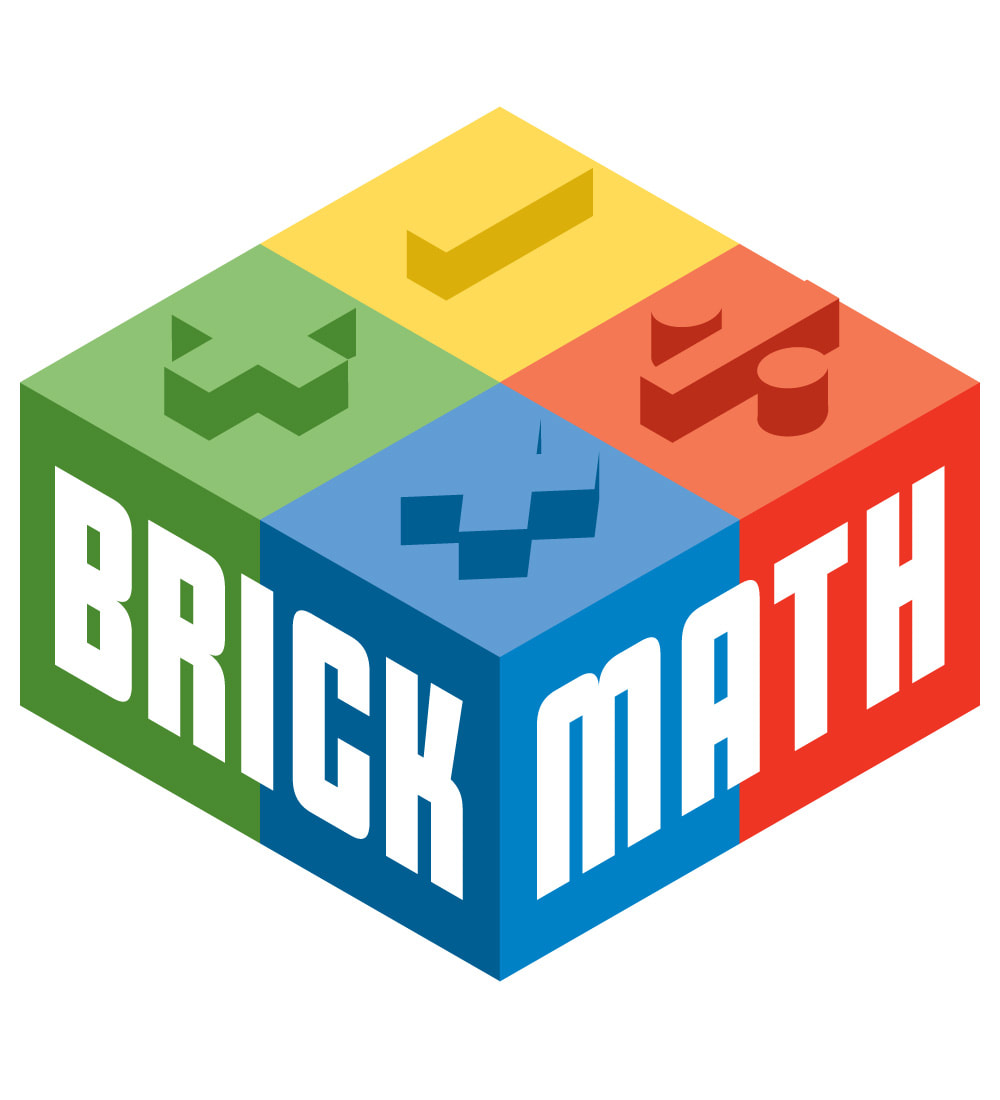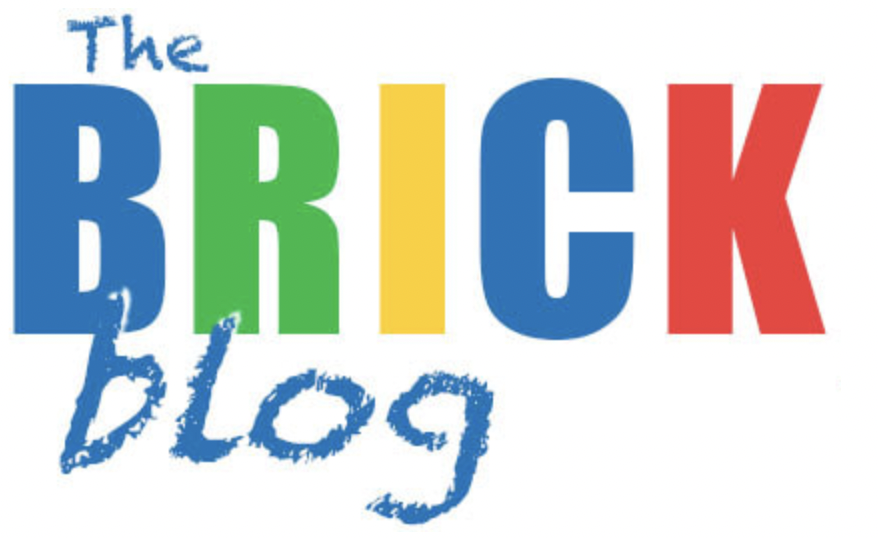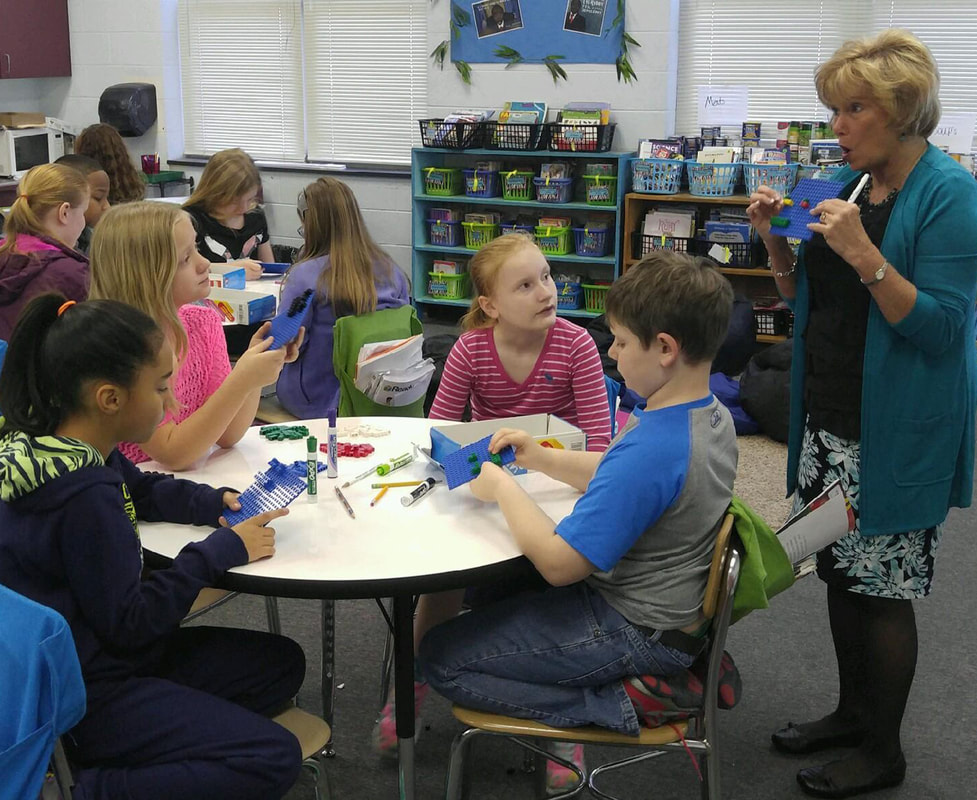 Math scores for students across the US have declined since the start of the pandemic, according to the most recent National Assessment of Educational Progress (known as the “Nation’s Report Card”). For fourth graders, only 36 were found proficient in math. Even worse were the scores for eighth graders: only 26 percent proficient in math. The term “proficient” means that the students have demonstrate competency in the subject matter in their grade level. 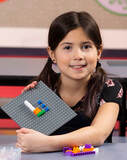 What does this mean for schools? Students need to focus on academic recovery. Students need to get back their math knowledge, and fast. Since math instruction builds on what students have previously learned, more and more students will be set back if they aren’t given the tools to catch up first. 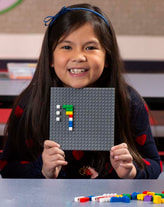 Brick Math is a perfect solution for schools, teachers, and parents who want to help their elementary and middle school students catch up in math. Brick Math teaches 11 subjects of basic math using LEGO® bricks. Modeling math with bricks helps students understand what the math means. The program is perfect for students who are struggling and haven’t learned through other teaching methods. It’s adaptable to all learning environments: whole-class instruction, small groups, and individual tutoring. 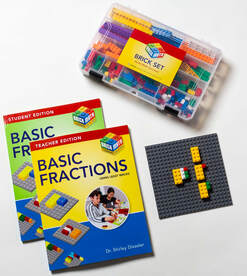 The school district of Davidson County, North Carolina, recently brought in Brick Math throughout the district to help bring their students back to levels of math proficiency. According to Dr. Deana Coley, Assistant Superintendent of Curriculum and Instruction for the district, “We asked our teachers which program students would have the most success with, and overwhelmingly, the teachers requested Brick Math.” 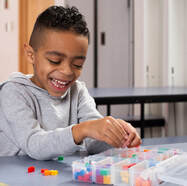 Brick Math is a K-6 math curriculum that uses LEGO® bricks to model 11 different math subjects: Counting, Addition, Subtraction, Multiplication, Division, Basic Fractions, Basic Measurement, Fraction Multiplication, Fraction Division, Advanced Measurement and Geometry, and Decimals. It works for math intervention, enrichment, as a whole-school program, and even homeschooling. Materials are simple and affordable. If you teach math or have a student at home who is learning K - 6th grade math, check brickmath.com. The website includes videos for both teacher training and direct instruction of students. You can learn more about how Brick Math improves students' math test scores and hear what people who are using Brick Math have to say about the program.
0 Comments
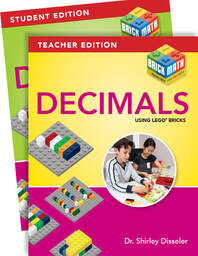 The August 2021 Lesson of the Month comes from the Decimals book. To get the August 2021 Lesson of the Month, plus a new lesson each month, click here. For the first time, we’re showing you Part 2 of a lesson, or “Show What You Know.” This comes after the teacher has demonstrated the skill in Part 1 of the lesson (“Show Them How”), with the students working along with their own bricks. In Part 2, the teacher poses a problem for the students to work out while the teacher observes and coaches. 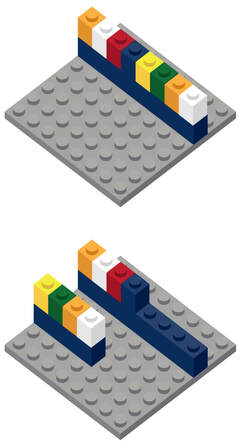 In Part 1, students have learned how to model decimals in a 100 x 100-stud decimal grid. In Part 2, students are first asked to model 0.42 in a decimal grid with bricks. Next, they are asked to try modeling any combination of studs that adds up to 0.30. In the Decimals book, the example illustrated is 0.14 + 0.16. The 100 x 100 decimal grid is a very useful tool to explain the concept of decimals to the one-hundredth place. Author of the Brick Math series, Dr. Shirley Disseler, demonstrates how to teach this decimal addition lesson in a one-minute Brick Math video, which is also part of the August 2021 Lesson of the Month. Watching the videos on the website really helps a teacher or parent understand how to guide a student through the Brick Math curriculum. Brick Math is a K-6 math curriculum that uses LEGO® bricks to model 11 different math subjects: Counting, Addition, Subtraction, Multiplication, Division, Basic Fractions, Basic Measurement, Fraction Multiplication, Fraction Division, Advanced Measurement and Geometry, and Decimals. It works well for homeschooling, math intervention, enrichment, and as a whole-school program. Materials are simple and affordable. If you teach math or have a student at home who is learning math, check brickmath.com. The website includes videos for both teacher training and direct instruction of students. You can learn more about how Brick Math improves student math test scores and hear what people who are using Brick Math have to say about the program. 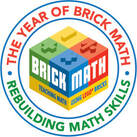 To celebrate "The Year of Brick Math," we're adding a new feature to the free Brick Math Lesson of the Month -- video! Dr. Shirley Disseler, author of the Brick Math curriculum, demonstrates the April 2021 lesson in a five-minute video that shows the concepts for comparing and ordering 3 fractions with unlike denominators. To get the April 2021 lesson, "Comparing and Ordering Fractions," and a link to the video lesson, plus a new lesson each month, sign up here. 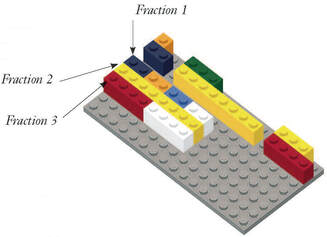 Elementary school math teachers know how tricky this skill can be for students to comprehend. When they look at the fractions 1/2, 3/8, and 3/4, many students will think that 3/8 is the biggest fraction of the three, since the denominator is the largest number. This lesson demonstrates the "fraction train" method of finding a common denominator using LEGO bricks to build the fraction models and model the equivalent fractions. 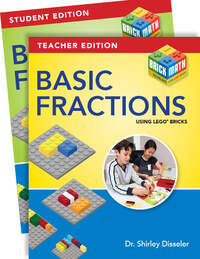 This lesson is from Chapter 7 of Basic Fractions Using LEGO Bricks in the Brick Math series. Students typically learn this skill in grades 3 - 4. Modeling the math with bricks makes it easy to learn. Try the free lesson with your students to see how much fun it is to learn with Brick Math! Brick Math is a K-6 math curriculum that uses LEGO® bricks to model 11 different math subjects: Counting, Addition, Subtraction, Multiplication, Division, Basic Fractions, Basic Measurement, Fraction Multiplication, Fraction Division, Advanced Measurement and Geometry, and Decimals. It works well for homeschooling, math intervention, enrichment, and as a whole-school program. Materials are simple and are not shared between students. It adapts easily to online instruction. 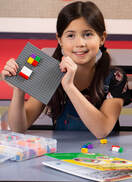 If you teach math or have a student at home who is learning math, check brickmath.com. The website includes videos for both teacher training and direct instruction of students. You can learn more about how Brick Math improves student math test scores and hear what people who are using Brick Math have to say about the program. 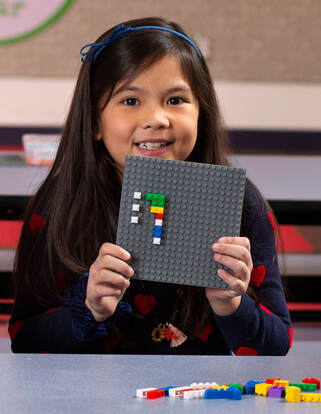 I recently had a customer tell me that her son didn’t understand the idea of factors until she tried Brick Math. When he saw the concept of factors made real with LEGO bricks, she said, he knew what they were! It’s exciting to hear when students finally “get it” because modeling with bricks makes all the difference for them. I started to think about that lesson on factors, and I realized it is the perfect way to demonstrate the power of Brick Math as a learning system. Here’s why Brick Math works so well to teach elementary math: it’s tactile (kids touch the bricks and build the models themselves), it’s visual (kids can see exactly what the numbers in a math problem represent), and it’s conceptual (kids understand the underlying idea behind the math when they discover it for themselves in a guided program). Let me show you how Brick Math works with that lesson on factors: This lesson models all the factors of 16 and demonstrates perfectly the meaning of “factor." Like all Brick Math lessons, it starts with some basic bricks and a baseplate to build on. Begin by placing one brick that has 16 studs on the baseplate (studs are the bumps on LEGO bricks). This can be a 2x8 brick or a 1x16 brick.The model shows 1 brick with 16 studs, so the multiplication fact shown is 1 x 16 = 16. 16 and 1 are factors of 16. 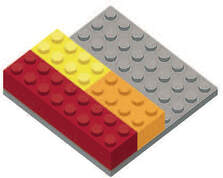 Next, take two bricks that each have 8 studs and place them next to the brick that’s already on the baseplate. It’s best if those two bricks are two different colors. You’ll use either two 2x4 bricks or two 1x8 bricks. Now the model shows 2 (bricks) x 8 (studs) = 16, and that 2 and 8 are also factors of 16. Now, here’s where the Brick Math program really becomes a powerful learning tool. For the next step, ask the student, “Are there 3 bricks that are all the same size that you can use to build the next row?” Let your students try with different bricks. They will demonstrate to themselves that there are none, so 3 can’t be a factor of 16. It’s so important that students discover for themselves while they are learning. That’s what helps them internalize what the math is all about. When they move on to looking for 4 bricks, they’ll find that four 2x2 bricks or 1x4 bricks do the trick. Now, they have 4 (bricks) x 4 (studs) = 16, so 4 is another factor of 16. 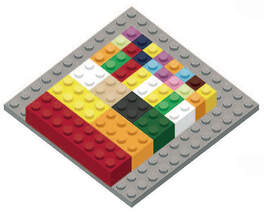 Have them look again for 5, 6, and 7 bricks that work in the model. They’ll quickly figure out that none of those numbers are factors of 16. They’ll move on to modeling eight 1x2 bricks, with the multiplication fact of 8 x 2 = 16. Finally, they can add sixteen 1x1 bricks to the model to complete all the factors with the multiplication fact of 16 x 1 = 16. When you look at the final model and count the number of bricks, the final model clearly shows the factors of 16: 1, 2, 4, 8, and 16. Dr. Shirley Disseler, developer of the Brick Math method, demonstrates this same lesson in the video below. 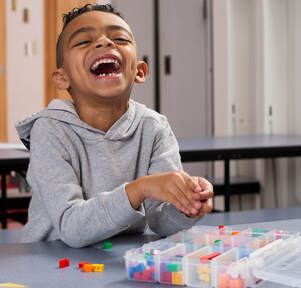 The concept of factors is key to learning multiplication, division, and fractions, so it’s in all three of the Brick Math books on those subjects: Multiplication, Division, and Basic Fractions. And it (almost) goes without saying: students have fun while they learn! If you teach math or have a student at home who is learning math, check brickmath.com. The website includes videos for both teacher training and direct instruction of students. You can learn more about how Brick Math improves student math test scores and hear what people who are using Brick Math have to say about the program.
Brick Math is a K-6 math curriculum that uses LEGO® bricks to model 11 different math subjects: Counting, Addition, Subtraction, Multiplication, Division, Basic Fractions, Basic Measurement, Fraction Multiplication, Fraction Division, Advanced Measurement and Geometry, and Decimals. It works well for math intervention, for enrichment, and as a whole-school program. Materials are simple and need not be shared between students. It adapts easily to online instruction. Contact us with any questions. 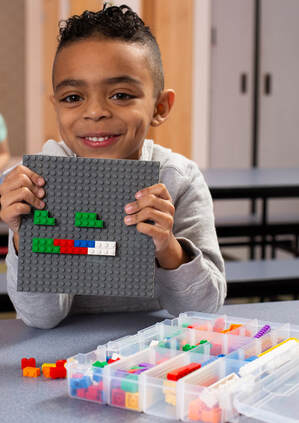 Many elementary schools are planning for a combination of in-school and online learning for the upcoming school year. But studies show that students have missed about half the math they should have learned this spring. It’s important that the math instructional methods for the fall carry through from the classroom to the home. Steven Blackburn, writing for District Administration, talks about two key needs for learning math: the use of manipulatives, and the ability for students to share their thinking with teachers and peers. He quotes Trena Wilkerson, president of the National Council of Teachers of Mathematics (NCTM): “Making math meaningful involves providing tasks and opportunities that allow students to engage in ways that make sense in their world to build upon whatever understanding they have at that moment to do meaningful work.” That’s how Brick Math works. Students build models with a familiar and fun manipulative, LEGO® bricks. Then they share their thinking about the math, both orally and in writing. Wilkerson is clear about the need for communication in math instruction: “There needs to be an open dialogue in learning just to ensure students are engaging with the mathematical principles and making sense of it in their world.” Schools can use the Brick Math curriculum and brick sets on site at school and also send brick sets and student workbooks home for students’ use there. Even students without Internet access can discuss their Brick Math work with teachers via phone or text. Whether in our new virtual classrooms or in real life, students need to learn along with the teacher, using a model to explain and describe the math. Dr. Shirley Disseler, author of the Brick Math curriculum, recently found that most parents of elementary students don’t feel qualified to work with their child in the area of math (23% of 250 respondents). In contrast, 65% felt they could help their child with reading tasks. For math, students need to see the teacher, hear the teacher, and work alongside the teacher whether online or in person. No matter how it is delivered, instruction must provide student engagement that is rooted in manipulative and hands-on work that is not solely worksheet and app based. Brick Math is a curriculum that helps students learn K-6 math in any learning environment. 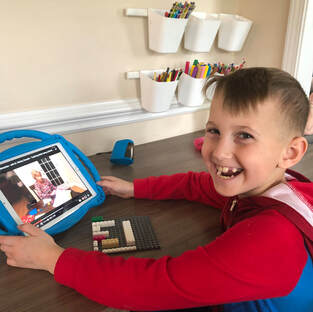 While kids are learning from home, Brick Math helps to make math fun! Dr. Shirley Disseler (aka "Dr. D") has launched a series of videos for students that help them learn K - 6 math using LEGO® bricks! In the "Brick Math with Dr. D" videos, Dr. Disseler teaches Brick Math directly to students, showing them the brick modeling techniques and explaining the "why" behind the math. "It's a great way for kids to start using LEGO® bricks to learn math concepts while they're home," says Dr. Disseler. "The lessons are really fun for kids to do, and they feel a great sense of satisfaction when they learn by building along with me as they watch the videos." "Brick Math with Dr. D" videos have lessons in Addition, Subtraction, Multiplication, and Basic Fractions. New videos are being added all the time to cover more math subjects. Says Dr. Disseler, "And parents are welcome to join us—Brick Math is fun for everyone!" We hear from teachers all the time who tell us that Brick Math is very effective for their students who weren’t learning math through the established school curriculum. Often the reason is because the Brick Math methodology appeals to all kinds of learners.
Obviously, kinesthetic learners take to Brick Math because they can manipulate the bricks, and actually touch the math content. Auditory learners learn from Brick Math through the process of explaining in words why their models show the math. Visual learners enjoy the highly visual nature of brick models, both through seeing completed models and through building and drawing their own models. And reading/writing learners respond particularly well to the component of the program that asks students to explain their thinking in writing. When Brick Math was being developed, author Dr. Shirley Disseler recognized the creative nature of the program. Often there is not just one right way to model a problem, but a variety. She continues to be surprised by new ways that students find to use the bricks to explain the underlying math concepts. The flexibility of Brick Math for all types of learners helps many students find success with math! 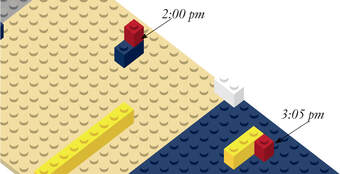 LEGO® bricks are a very versatile manipulative for math. In fact, Brick Math author Dr. Shirley Disseler has developed a method of teaching students to tell time using bricks! The technique is called a “linear clock,” which models the numbers 1 through 12 with bricks. It works well to teach students how to tell time and how to find elapsed time. Baseplates are joined together to make the clock, and each stud on the baseplate models a five-minute increment. Naturally, when using bricks to teach the concept of time, it’s important to also relate the linear clock to both an analog clock and a digital clock, so students learn how to tell time through conventional means. Here’s an example of using bricks on the linear clock to show elapsed time (from Basic Measurement Using LEGO® Bricks): Using the linear clock model, place a red 1x1 brick at 2:00 pm on the baseplate. Count forward 65 minutes, and mark the new time on the baseplate with another red 1x1 brick. What time is it now? Write a math sentence for your model. Answer: The new time is 3:05 pm. Math sentence: 2 hours + 65 minutes = 3 hours 5 minutes or 3:05 pm 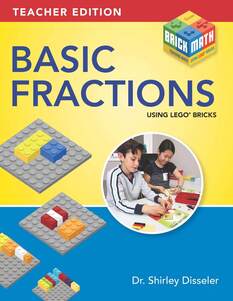 The second edition of Basic Fractions Using LEGO® Bricks has just been published! This edition has even more ways to teach students about fractions than before. The first edition of Teaching Fractions Using LEGO® Bricks was the very first book written in the 22-book Brick Math series. Author Dr. Shirley Disseler went back to this best-selling book and thought it was time for an update. The second edition has lots of new illustrations of the brick models as well as several new chapters with content that was not included in the original book. Here's what's new in this second edition:
Right now, until December 15, the Brick Math FREE Lesson of the Month is from the Basic Fractions book, and it shows how to teach students to compare and order fractions, using the fantastic "fraction train" method. To download the free lesson, click here. High Point University, home of Brick Math author Dr. Shirley Disseler, celebrated International LEGO Day yesterday, encouraging HPU students to come to the Stout School of Education and build something out of bricks that they are passionate about.
Dr. Disseler is passionate about using the bricks to help students learn math. Her Brick Math curriculum for elementary and middle school was developed to help students conceptualize math, or, as Dr. Disseler says, "to understand the why behind the math." Here's the full article about International LEGO Day at HPU, courtesy of the HIgh Point Enterprise. |
Categories
All
Archives
July 2024
|

